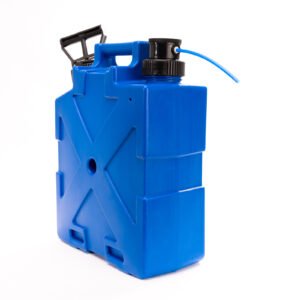How effective are ceramic filters at generating potable water?
ow effective are ceramic filters at generating potable water?
Although the technology they use is extremely simple, ceramic filters are increasingly popular water filtration devices. Ceramic filters trap bacteria in tiny pores like a sieve, allowing potable water to filter through.
So, how effective are ceramic filters? Ceramic filters are effective at catching cryptosporidium and giardia, the two primary causes of diarrhea from drinking dirty water. However, volatile organic compounds and chlorine will remain in the potable water as the microns are small enough to pass through.
There are several issues with ceramic filters. One common concern about ceramic filters is that one cannot know exactly how effective any particular ceramic filter is. The effectiveness of ceramic filters is dependent on their pore size. The pore size of a ceramic filter is dependent on two main variables: the ceramic material used and the temperature at which the kiln is set when the ceramic filter is vitrified. Although the composition varies from filter to filter, most ceramic filters are made of diatomaceous earth, a fine silica powder found in certain types of algae.
Ceramic filters must be vitrified in order to work effectively. When struck, a properly vitrified ceramic filter should ring like a bell. When vitrified, ceramic filters should not retain black specks, as this means the carbon hasn’t broken down during the firing process.
Effective ceramic filters are relatively slow to work. Most have a slow flow rate, passing water through the ceramic element at a rate of two liters an hour. For this reason, ceramic filtration is one of the least time-efficient methods of water filtration. However, in developing countries, ceramic filters are adequate as they are low-maintenance and don’t require batteries or electricity to run. For this reason, ceramic filters have been used to increase the standard of living in many areas throughout Asia and Africa.
Ceramic water filters are more effective if used in conjunction with other forms of water filtration. In areas where ceramic filters aren’t entirely effective, they can still be helpful as a pre-treatment before reverse osmosis water treatment systems.
The main disadvantages with ceramic water filters are the limited volume of potable water one can produce from a single filter and filtration in areas with dangerous chemicals such as arsenic in the water. Ceramic filters are slow to produce a small amount of potable water, so they aren’t the best option for large NGOs trying to provide potable water for whole communities. Any organization planning to use ceramic filters as the primary source of water filtration would need to thoroughly research the water quality and do extensive testing to ensure that ceramic filters provide sufficiently potable water.
As with many filtration devices, it is essential to avoid touching the vessel catching the purified water from the ceramic filter. Often, your hands come into contact with contaminated water while you are filling the filter, so it’s important not to contaminate the water you have just gone to all the effort of purifying. However, if in doubt, simply pour the water through the ceramic filter a second time.


